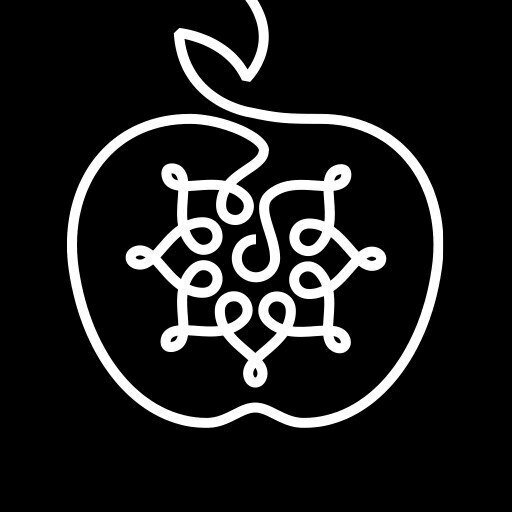How a Soviet painting in the genre of socialist realism received a new life on the wall of a parking structure
How two works by artists from different countries completed each other
Hoodo (Moscow), Karim Jabbari (Montreal)
75B Lenin Street
«A Drop» and «Earth»
«Тамчы» һәм «Җир»
Context
There are two works at 75V Lenin Street. At the top is «Earth»: a rethinking of Tatar socialist realist artist Haris Yakupov's work «Gold of Tataria» about the history of Tatarstan and the oil industry.

Working with the plot and images from that painting, artists from the Moscow duo «Hoodo» used maps of the city of Almetyevsk, archival photographs and other materials. Thus a new work materialized on the almost 2000 meter-high parking structure. On the bottom is «Drop» by Karim Jabbari from Montreal, a calligraphic fantasy based on the title work Golden Tales project, the Tatar folk tale about children as the highest value. Working on «Drop,» Jabbari was inspired by a visit to the Bolgar State Historical and Architectural Museum-Reserve.
Haris Yakupov. The Gold of Tataria. 1974.
Working with the plot and images from that painting, artists from the Moscow duo «Hoodo» used maps of the city of Almetyevsk, archival photographs and other materials. Thus a new work materialized on the almost 2000 meter-high parking structure. On the bottom is «Drop» by Karim Jabbari from Montreal, a calligraphic fantasy based on the title work Golden Tales project, the Tatar folk tale about children as the highest value. Working on «Drop,» Jabbari was inspired by a visit to the Bolgar State Historical and Architectural Museum-Reserve.

Haris Yakupov. The Gold of Tataria. 1974.
Process
Ital. Mural — wall
Monumental wall painting created on a faсade or a blank wall of a building or any other urban architectural objects.
Monumental wall painting created on a faсade or a blank wall of a building or any other urban architectural objects.

Fragment of the artwork «Earth».
Fragment of the artwork «Earth».
Author

«Hoodo» is the illustrator team of Andrei Cherednichenko and Olga Druzhina, who work predominantly in wall painting. They met while studying graphic design. They have been painting together since 2012, before which they worked separately on the street. They created murals and paintings for the Arena CSKA Stadium, the Flacon Design Factory, Starbucks, and IKEA.
Fragment of the artwork «Earth».
«Hoodo» is the illustrator team of Andrei Cherednichenko and Olga Druzhina, who work predominantly in wall painting. They met while studying graphic design. They have been painting together since 2012, before which they worked separately on the street. They created murals and paintings for the Arena CSKA Stadium, the Flacon Design Factory, Starbucks, and IKEA.

Fragment of the artwork «Earth».

Karim Jabbari is one of the founders of the trend in street art called calligraffiti. He was born in Kasserin (Tunisia) and received a formal education in Montreal, Canada, where he began working with calligraphy in outdoor spaces. In his work, Jabbari interprets ancient styles dating back to Aramaic writing, bringing them closer to the modern generation. In addition to street art, he is engaged in light calligraphy, combining calligraphy and new media, and gives master classes around the world. In 2015, Jabbari appeared in TED Talks in Casablanca.
Working on a mural «Drop».
Karim Jabbari is one of the founders of the trend in street art called calligraffiti. He was born in Kasserin (Tunisia) and received a formal education in Montreal, Canada, where he began working with calligraphy in outdoor spaces. In his work, Jabbari interprets ancient styles dating back to Aramaic writing, bringing them closer to the modern generation. In addition to street art, he is engaged in light calligraphy, combining calligraphy and new media, and gives master classes around the world. In 2015, Jabbari appeared in TED Talks in Casablanca.

Working on a mural «Drop».
Address
CONTACT US
© 2025 Street Art Research Institute
Made by Gonzo Design
Banking details
ООО «ТЕОРИЯ И ПРАКТИКА УЛИЧНОГО ИСКУССТВА»
ИНН: 7810474682
КПП: 784201001
ОГРН: 1167847291545
ОКПО: 03512611
ОКВЭД: 90.0 (Деятельность творческая, деятельность в области искусства и организации развлечений)
Расчетный счет: 40702810455160005262
Банк: СЕВЕРО-ЗАПАДНЫЙ БАНК ПАО СБЕРБАНК
БИК: 044030653
Корр. счет: 30101810500000000653
Юридический адрес: 191040, Санкт-Петербург г, Лиговский пр-кт, дом 50, литера Н, помещение 16-Н офис № 56
Телефон: 401-44-90
Генеральный директор: Фиева Полина Григорьевна






